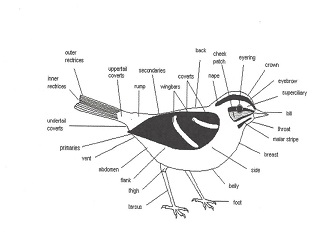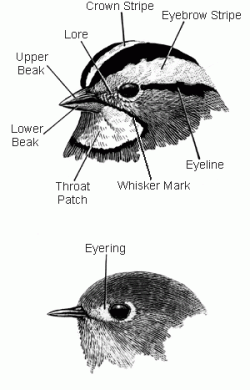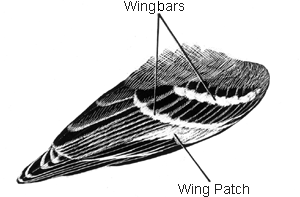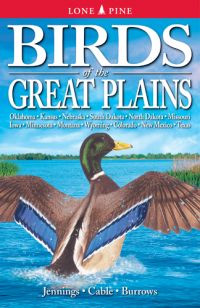Blog - General
How to Identify Birds
Identifying Birds
-
Look at the bird for as long as it is in view so you can absorb everything about it. Practice on your feeder birds and others in your yard. Look closely at them. Use binoculars. 8 X 40 full size are best. Get the best binoculars you can afford. Spot the bird with your eyes first, then with eyes fixed on the bird raise the binoculars to your eyes.
-
Describe what you see. This is the best way to SEE a bird. Pay attention to detail, from the head to the tail. What does the bill look like? Does it have an eyebrows or eye rings? Does it have wing-bars? Color of body parts. Is the crown of the head striped, colored, or solid? These are useful “field marks” to look for.
-
Look at the body shape and size. Is it the size of a sparrow or robin? Sleek or heavy? Long tail or short tail? Is the tail notched? Jot down your observations. Keep a pad and pencil close by when observing birds.
-
What is the bird doing? Behavior can be useful in identification. Is it scratching on the ground? Must be a native sparrow. Does it take a seed from the feeder then leave? Must be a Nuthatch or Chickadee. Notice the flight pattern. Straight or undulating?
-
Pay attention to any sound it makes. Birds are relatively quiet during the winter and do not sing but make short calls or none at all. During the nesting season they sing. What kind of sound is it making?
-
Use a good field guide. Find one you are comfortable using. They range from beginner to novice. Do you like photographs or sketches. Those using sketches have the ability to highlight field marks. Make sure you have the field guide for the region you live in or are traveling to.
-
Keep a list of every bird you see. These are called life lists which many birders keep. I have know some birders to have hundreds of birds on their life lists.
-
Most important, notice what kind of habitat you are seeing these birds in. Is it prairie? Woodlands? Lake or mud-flats? Habitat is a key denominator as to what types of birds you are going to be viewing and trying to identify.
Follow these simple guidelines and before long you will be identifying the birds in your yard with ease and even some unusual and rare birds that may appear. You’ll find yourself expanding beyond the backyard. But where ever you go birding, enjoy it. And as always, good birding to you all. (Parts of a bird images at bottom of page)
Quick Guide Birding Tips –
Where are you?
-
Geographic Area (referred to as Range in bird ID books) – What birds to expect where you are regionally. Eastern or Western U.S. Northern or Southern U.S.
-
Habitat – What kind of environment? Open water, riparian, prairie, marsh, woods, woodland edges, urbanized city, suburban neighborhood, or mixed area
-
Time of Year –
-
Winter – resident birds and winter visitors from the North
-
Spring – transition time – resident birds, migratory summer resident birds, migratory birds passing through.
-
Summer – nesting birds –resident birds, summer resident birds.
-
Fall – transition time – resident birds, migratory birds moving south.
What to look for?
-
Size – How does it compare in size to common birds?
-
Sparrow sized? Smaller? Same size? Bigger?
-
Robin sized? Between Robin & Sparrow sized? Bigger?
-
Crow sized? Between Crow & Robin sized? Bigger?
-
Re-tailed Hawk, Turkey Vulture, Eagle? Very large?
-
Color – What is the predominant color/s?
-
Black (Crow)
-
Brown (Many sparrows)
-
White (Egrets & Gulls))
-
Red (Male Cardinal)
-
Orange (Northern Oriole)
-
Yellow (Yellow Warbler & Goldfinch))
-
Blue (Blue Jay & Indigo Bunting)
-
Grey (Catbird)
-
Black & White (Downy & Hairy Woodpeckers)
-
Shape – Is it thin or stocky? Odd shaped in any way? Unusual proportions?
-
Behaviors – Do you notice anything unusual about how the bird acts?
-
Flight – speed, straight (mourning Dove) or undulating (Goldfinch & woodpeckers), soaring (Broad-winged hawks & Turkey Vultures) , hovering (Kestrel – falcon)
-
Moving on the ground – hoppers, walkers, stalkers, jerky motion
-
Tree trunk huggers (woodpeckers,nuthatches and creepers)
-
Feeding habits – divers, dippers, launch off a perch, stalkers, do they feed on aquatic life? Insects? Seeds/berries?
-
Details – In close-ups do you see anything distinctive?
-
Eye-ring or Eye-stripe (Carolina Wren)
-
Eye color (yellow – Brown Thrasher, red – Red-eyed Vireo)
-
Wing bars (Goldfinch)
-
Bill color (Junco – pink bill)
-
Leg or foot color (Junco –pink legs)
-
Bill size (Large – Herons & Cardinals: Small – Warblers & Nighthawk)
-
Crests – Blue Jay, Cardinal, Cedar Waxwing, Kingfisher, Tufted Titmouse
-
Outer Tail feathers (white) – Juncos & Meadowlarks
-
Rump spots – Harrier – Hawks & Flickers – Grey Catbird
-
Songs – Can tell you they are there before you see them
-
Full songs
-
Warning calls
Notes – Complications to Consider
-
Males and Females – are they essentially identical (Black-capped Chickadee, Blue Jay) or distinctively different (Cardinal, House Finch)
-
Young adults – may take a few years to reach maturity and have adult plumage (Bald Eagles 5 years)
-
Young or Immature birds – often look similar to adult female birds (non-distinctive)
-
Spring vs. fall plumage – in the spring birds have colorful breeding plumage. In the fall and winter when in their basic plumage they are less colorful, more non-descriptive. In many cases during the fall and winter adult birds may appear to look more like immature birds.
-
Rare birds do wander into Nebraska at any time of the year. More often in the spring and fall during migration.




